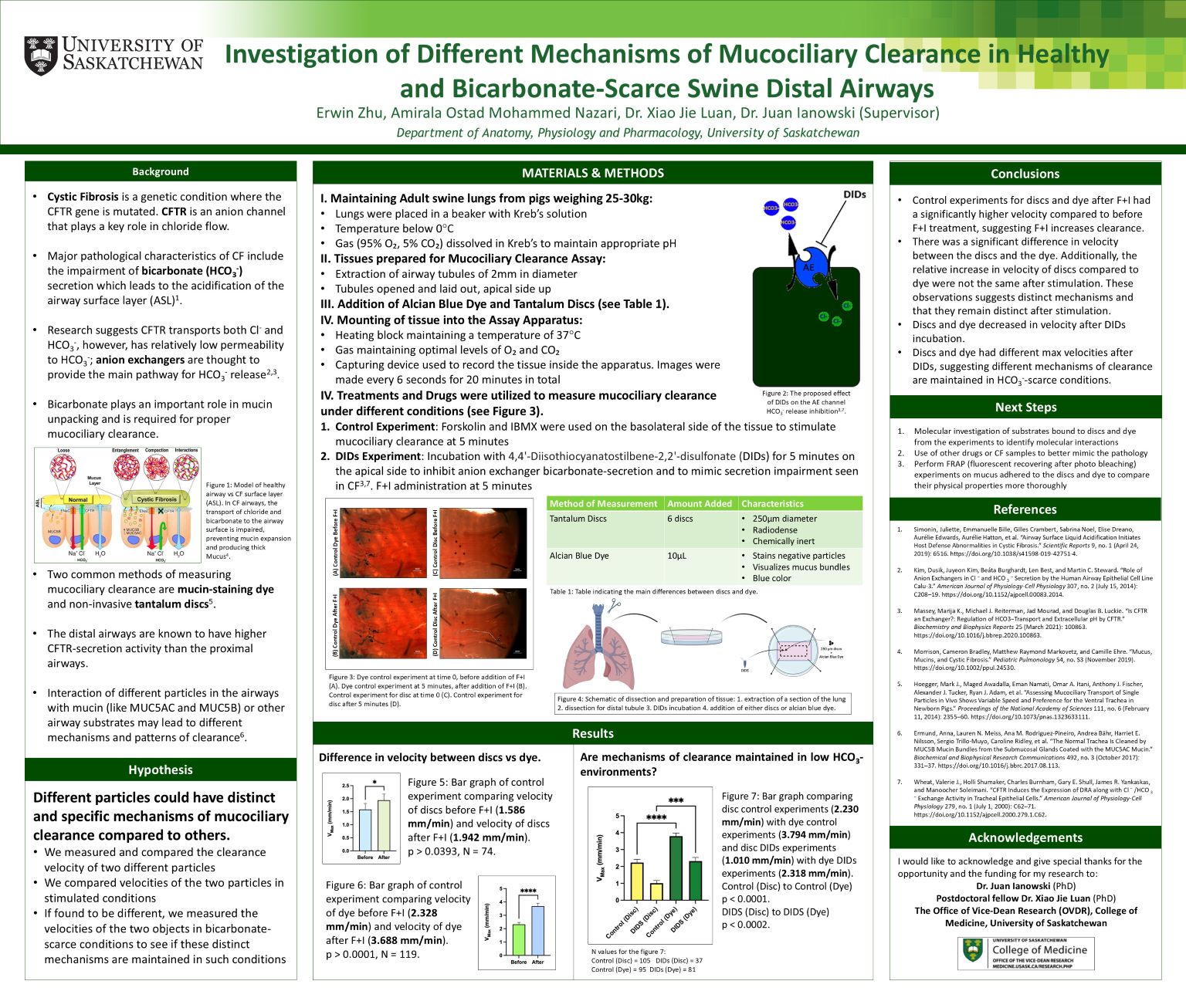
Investigation of Different Mechanisms of Mucociliary Clearance in Healthy and Bicarbonate-Scarce Swine Distal Airways
Erwin Zhu
Cystic Fibrosis (CF) is an autosomal genetic mutation where the cystic fibrosis transmembrane regulator (CFTR) anion channel is dysfunctional. Major pulmonary pathologies of CF include pH disruptions, reduced bicarbonate (HCO3-) secretion and impaired ciliated clearance of objects by the airways (mucociliary clearance). The impaired HCO3- secretion in CF is proposed to be a major factor of dysfunctional mucociliary clearance (MCC), due to bicarbonate’s mucin-unpacking properties and contribution to airway pH. Recent research presented the existence of distinct mechanisms for clearance based on different airway substrate-object interactions. In this study, two different MCC measurement methods (tantalum discs and Alcian blue dye) were performed to determine the existence of distinct clearance velocities between discs and dye in healthy and in CF-like bicarbonate-defective distal swine airways. Provided we see distinct movements for different MCC experiments, results may give way for research on the molecular interactions governing clearance, research on molecular therapies for better clearance in CF conditions and give insight to how different respiratory infections are cleared. We also investigate whether distinct clearance velocities, if found, are maintained or become indistinguishable in CF-like conditions. Results will also emphasize the implications of using different MCC measurement methods for future CF and pulmonary research.
